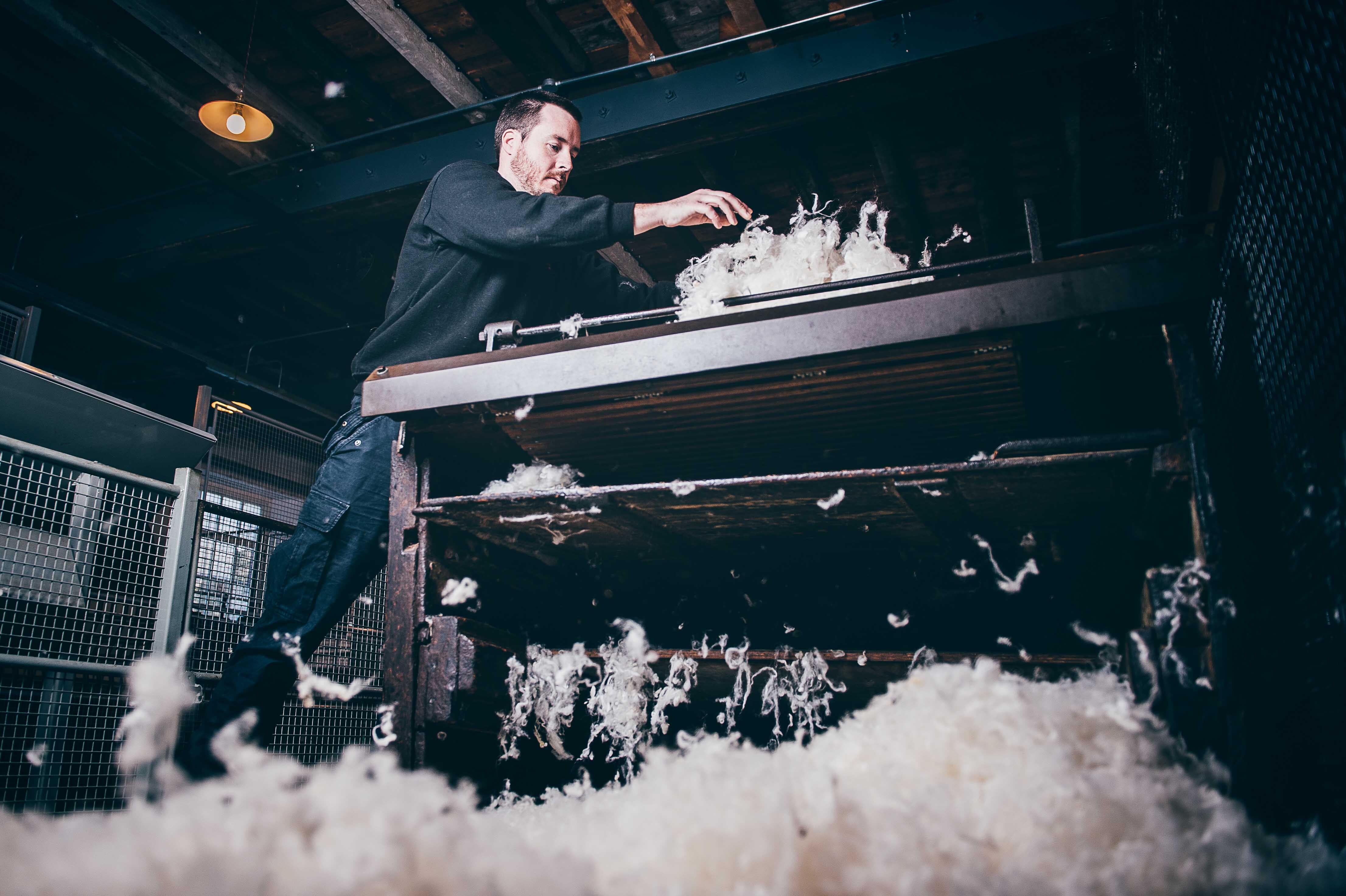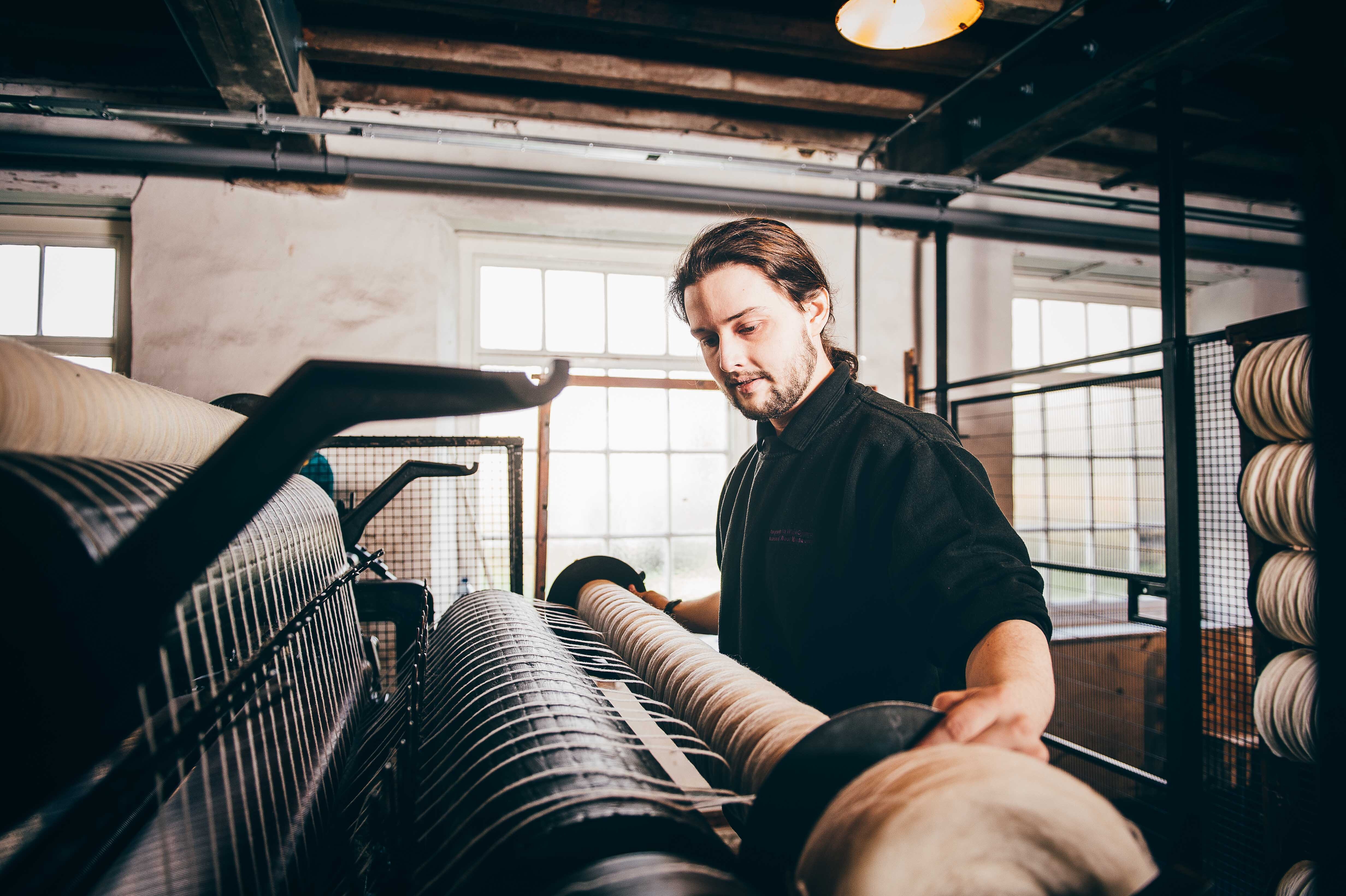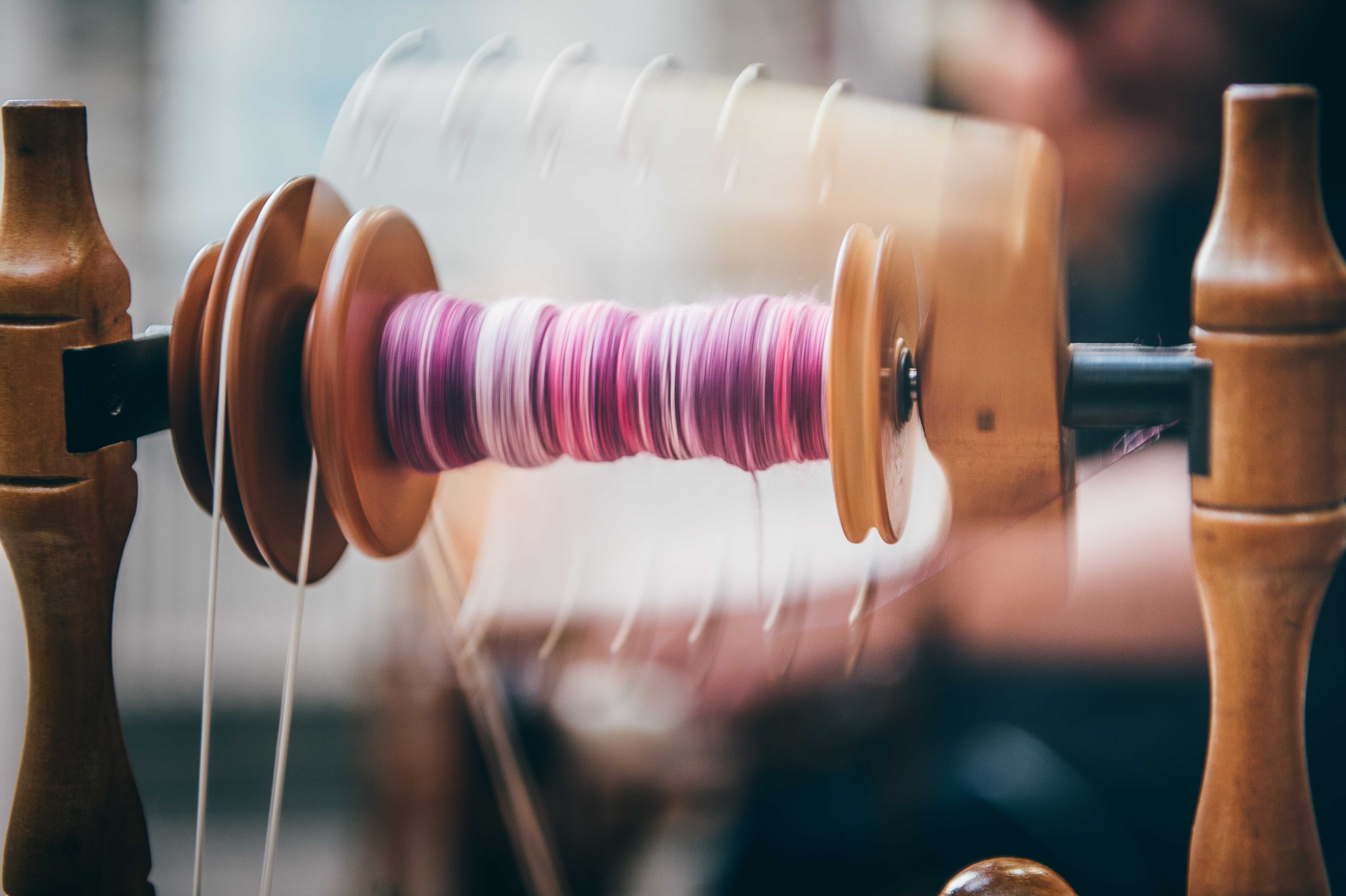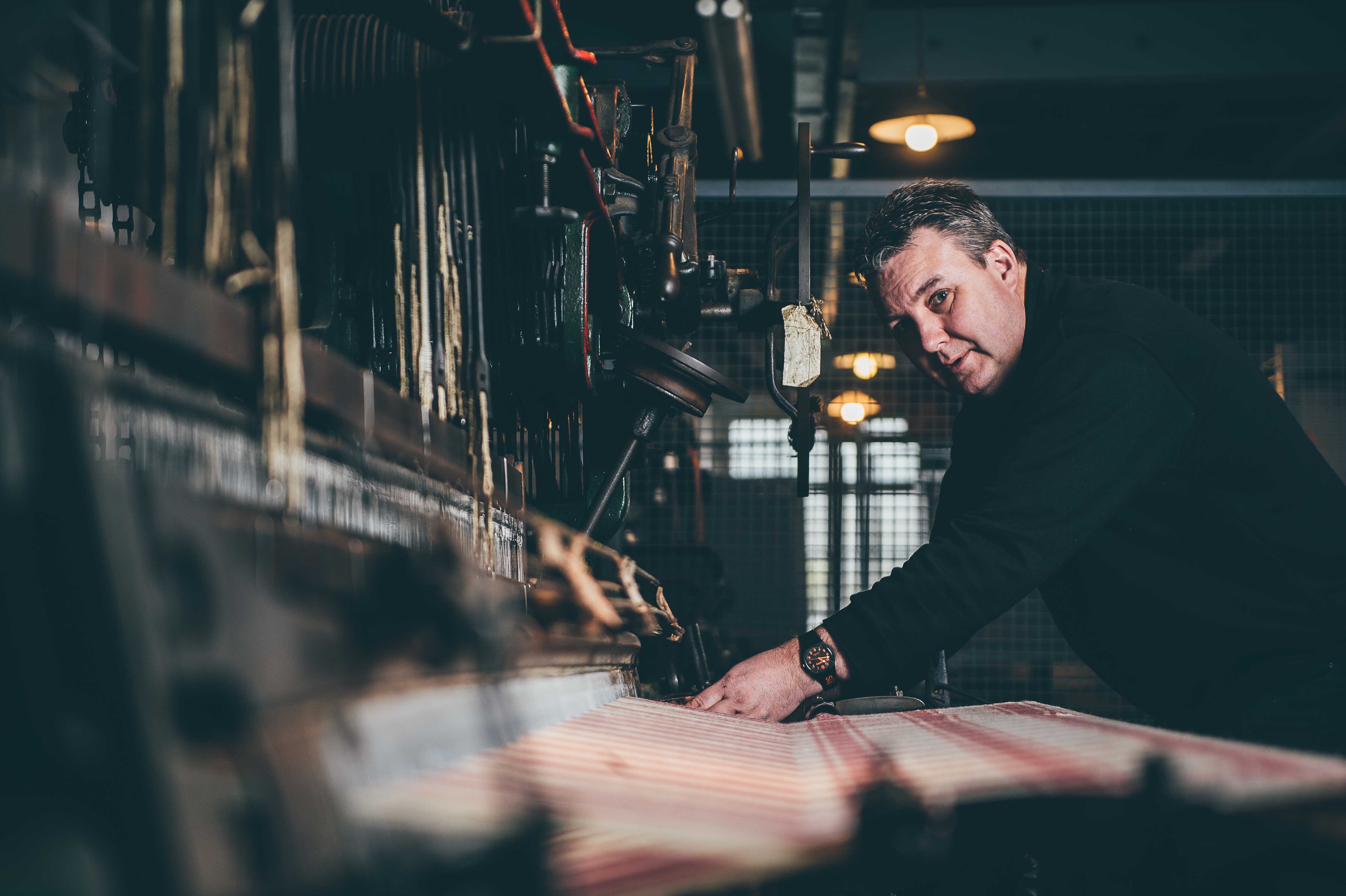The Process — from fleece to fabric

Shearing, Harvesting and Sorting.
Sheep shearing was the social highlight of the year on the farms of Wales. Sheared in one piece, the fleeces were rolled out and then folded correctly to make sorting easier in the mill.
The sorting process was vital as different sheep produce different quality of wool, resulting in different produce like clothing, carpets and blankets, while the quality of wool varies depending on the part of the sheep’s body it comes from.

Willowing, Scouring and Dying
The fleece is put through a willower to untangle the wool, removing impurities such as dust and sand, disentangling it on a roller with metal teeth to create a soft, fluffy mass of fibres.
Some of the larger mills in Wales scoured the wool before willowing. The most common method, until the 1930s, was to immerse raw wool in a solution consisting of one part human urine, one part water.
Up until around 1850, natural colours were used to dye wool, with three stages when it could occur: when it was still a fleece, in threads ready for weaving, or after the cloth had been woven.

Carding, Spinning and Winding
Carding produces fully disentangled, soft rolls of wool called rovings or rolags, for spinning into yarn. Originally done by hand, a carding engine was invented in the 18th century.
Spinning pulls and twists the fibres together to form a continuous thread, turning the soft rolls into strong woollen yarn, originally by using a portable spindle and whorl.
In the 19th century, fast and efficient spinning machines were invented, transforming the woollen industry. Winding, unwinding and winding again are all essential processes in preparing yarn for weaving.

James Whittall, Trainee Crafter
Warping, Weaving and Finishing
Warping by hand is one of the most intricate of all textile processes, with all the threads for the warp of a piece of cloth placed in the correct order, and colour sequence, before weaving.
Weaving turns the yarn into cloth, which is made of two sets of threads. The warp thread sit side by side, and the weft threads are woven under and over the warp – under one, over one, under over … and so on.As well as washing and drying; fulling, napping and pressing were all part of the finishing process.
You can learn more about all the processes and terms on your visit to the Museum, and get a close-up view of the tools and machinery that were vital to the industry.